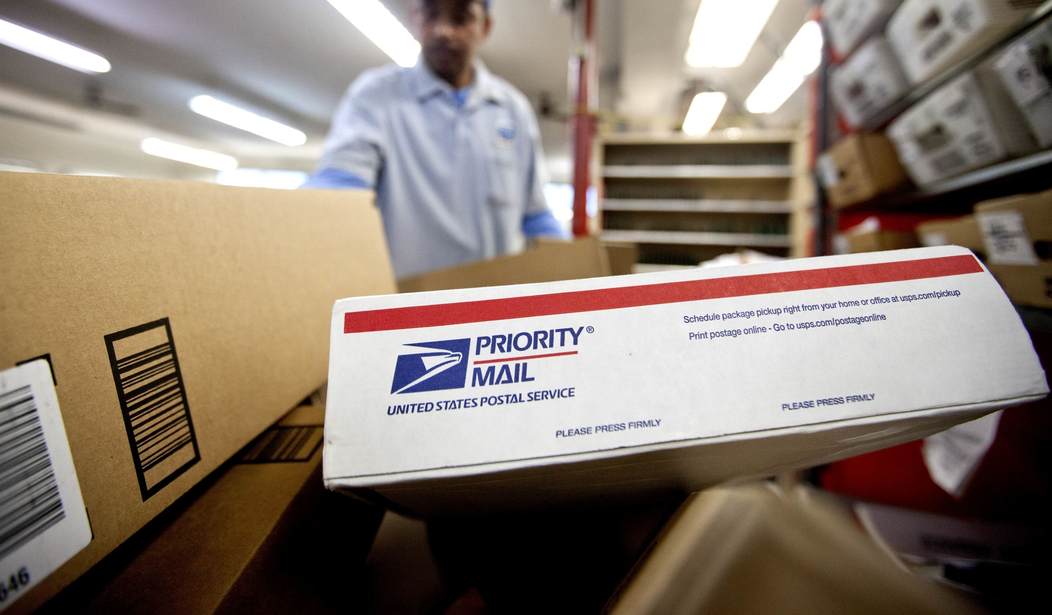On successive pages open ocean-deep in the report of President Trump’s task force on how to improve the U.S. Postal Service can be found both the challenge it faces and the problems it will have in meeting that challenge and returning the Postal Service to some semblance of fiscal sanity.
First, the report talks about how the Postal Service does not assess enough of its costs for delivering packages to customers, causing large losses that actually grow along with volume. It says the Postal Service needs to establish a new balance sheet to track these costs and increase the amount it attributes to package delivery – now 5.5 percent of institutional costs – to closer to reality, which is about 23 percent.
It then tells us that operating costs will go up 70 percent over the next 10 years, primarily because the Postal Service must replace the fleet of aging vehicles it has kept on the road because of the current budget constraints with more expensive vehicles that are designed to handle its burgeoning package business.
We can talk about prefunding benefits and universal service obligations forever, the report implies, but until Postal Service executives begin to price their products to make a profit rather than to run up volume, the problems are only going to get worse.
And they are – rapidly. The Postal Service has lost in the billions of dollars for 12 straight years, and its liabilities exceed its assets by more than $124 billion. But in 2017, it trimmed its losses to $800 million, only to see them rise to $2 billion in fiscal 2018 and an expected $3.1 billion in 2019.
Recommended
Package delivery was said to be the best way to pick up the slack. Mail volume has declined every year since 2010 and figures to go lower as bills and other correspondence make their way online. Meanwhile, package volume – bolstered by e-commerce – has doubled in that period and now accounts for 30 percent of Postal Service volume and half as much revenue as first-class mail, the Postal Service’s most profitable product.
But the volume of first-class mail is down 42 percent since 2007 and overall volume is down 33 percent. The additional revenue from packages visit significant expenses on the Postal Service, but those additional expenses have not been properly recorded on the bottom line.
The report recommends the Postal Service define its Universal Service Obligation – the promise it will deliver to every address in America – so that it extends only to vital services, such as first-class mail, bills, tax, voting and licensing information for government, and let its other ventures continue only if they are truly profitable after a transparent and accurate allocation of costs.
Those that profit and survive then should have their own balance sheets, the report said, so costs are clearly delineated as attributable to its monopoly-protected businesses of delivering first-class mail and being the only entity allowed to place items in mailboxes or its competitive package and other deliveries.
This will enable decision-makers to avoid the pitfalls such as those that provided impetus for this report – the deal with Amazon in which the Postal Service spends nearly $3.50 to deliver packages for the world’s largest online retailer but charges just $2 per package.
It also will pave the way for the Postal Service to stop offering products in areas of the country where they are not profitable. Comprehensive package delivery may work in California, for instance, but not in Wyoming. If this were to occur, with the reduced service obligation, Wyoming residents still would receive daily mail and limited delivery of critical packages, such as medicines, but Californians who support the package business in greater numbers could continue to patronize it.
It also would allow the Postal Service to price these products in a way that they contribute to – rather than detract from – the entire bottom line.
President Trump accused the Postal Service of making bad business decisions, and the report seems to bear that out. Although it holds two valuable congressionally protected monopolies – over mailboxes and first-class mail – it chose to essentially buy its way into the package business with deals no competitor can touch because no competitor has the monopoly-protected, taxpayer-backstopped pocketbook the Postal Service does.
Package delivery is a growing part of the Postal Service’s portfolio, and that is unlikely to change. But if the agency on which we all depend is to regain financial solvency, the costs of that branch of the business must be properly apportioned and the deals, going forward, must reflect those real costs.



















Join the conversation as a VIP Member